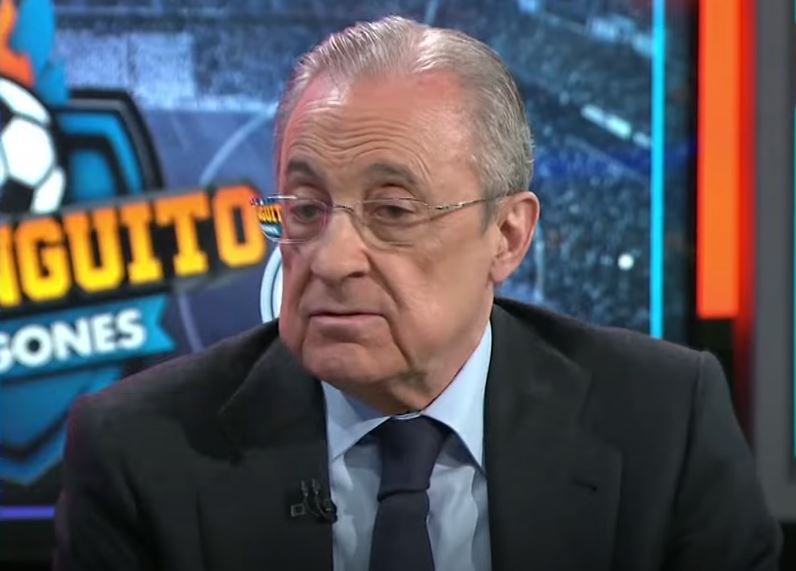
Few people have had a greater impact on European infrastructure and sport in recent years than Florentino Pérez. He is the owner of the most admired football team and Spain’s biggest construction empire. His wealth has increased steadily over the years, reaching an astounding $3.9 billion in 2025. In a way that few others can match, he has connected boardrooms with stadium seats through intentional and consistently strategic decisions.
Pérez has established himself as one of the richest people in Europe by managing Grupo ACS with the accuracy of an engineer and the intuition of a tactician. With the help of multibillion-dollar contracts for everything from solar farms to high-speed rail projects, his nearly 14% stake in this publicly traded powerhouse has steadily increased. This is operational control supported by decades of influence and foresight, not just ownership. Grupo ACS was surprisingly inexpensive when it first started, but it has since grown into an investment that many people believe to be very resilient.
Florentino Pérez – Profile Summary
| Attribute | Detail |
|---|---|
| Full Name | Florentino Pérez Rodríguez |
| Date of Birth | March 8, 1947 |
| Age | 78 |
| Birthplace | Madrid, Spain |
| Nationality | Spanish |
| Education | Universidad Politécnica de Madrid |
| Net Worth (2025) | $3.9 Billion USD |
| Occupation | Businessman, Civil Engineer, Football Executive |
| Main Business | Chairman & CEO of Grupo ACS |
| Football Role | President of Real Madrid |
| Years Active (Real Madrid) | 2000–2006, 2009–Present |
| Marital Status | Widowed (María Ángeles Sandoval, 2012) |
| Children | Three |
However, Pérez is more than just a cement contract holder and stock option tycoon. As the president of Real Madrid, his second identity has turned him into a cultural force that shapes football’s marketing, monetization, and play. His pitch, when he first took over as manager of the team in 2000, was unorthodox but remarkably straightforward: bring international superstars to Madrid and transform the team into a global brand and competitive powerhouse. The “Galácticos” era—a term that is now ingrained in football legend—came next.
He brought Ronaldo Nazário, David Beckham, Zinedine Zidane, and Luis Figo into the same locker room through bold and frequently record-breaking transfers. It was viewed by critics as a flashover function. Nonetheless, it significantly increased the club’s brand value, particularly in developing nations. In addition to trophies, sponsorship agreements, merchandise sales, and media attention were used to gauge the success. Real Madrid evolved from a team to a refined representation of contemporary sports administration.
Pérez briefly resigned in 2006 because of poor performance, but he returned in 2009 and promptly rekindled his plan. With great fanfare—and higher prices—came Cristiano Ronaldo, Kaká, Karim Benzema, and then Gareth Bale. It was exciting for the fans. It was profitable for accountants. He transformed Real Madrid into a money-making machine by taking advantage of the team’s enormous fan base and carefully negotiating the broadcast rights.
The way Pérez continues to influence football’s financial future is arguably the most fascinating aspect. He aimed to restructure club football by putting Real Madrid at the forefront of the controversial European Super League proposal. His readiness to incite industry reform demonstrates a man unafraid of controversy when he feels structural transformation is long overdue, even though the project failed under public scrutiny.
When clubs all over Europe were struggling during the pandemic, Pérez’s Real Madrid showed remarkable financial fortitude. Madrid’s revenue model, which is based on decades of audience loyalty, astute merchandising, and reliable performance, has remained incredibly effective, in contrast to clubs owned by oil-rich consortiums. Real Madrid accomplished a historic double in 2022, winning the 35th La Liga championship and the 14th Champions League. These were no coincidences. They were meticulously designed results of years of preparation and investment.
Pérez’s Real Madrid is more than just a trophy collector in terms of its cultural influence. Through the Real Madrid Foundation, the club has promoted global charitable causes, increased investments in youth academies, and sparked positive change. It has strengthened the brand’s social footprint while giving back by assisting in the development of sports and education initiatives in underprivileged areas through strategic partnerships.
There are some distinctive layers to Pérez’s journey that set him apart from other financial titans in sports. He is not a media tycoon, a hedge fund, or a sheikh. His expertise in transport policy and civil engineering equipped him with the means to create systems rather than merely legacy. Even his political background, having held positions as head of agrarian reform and director of transport infrastructure, shaped his calculating, highly networked, and impressively composed leadership style.
Pérez constructs cathedrals of sport, such as the renovated Santiago Bernabéu, which will serve as a year-round entertainment venue, while Elon Musk engineers rockets and Jeff Bezos perfects logistics. This goes beyond simply replacing the roof and seats. It’s a bold attempt to make Real Madrid a revenue hub and an urban landmark that will be future-proof for decades.
Pérez has indicated intentions to increase youth recruitment efforts and make investments in data-driven scouting since he was reelected in 2025 for a further four-year term. Notably, his efforts to sign Jude Bellingham and Kylian Mbappé mark the start of a new era for Galáctico. He is also making behind-the-scenes investments in analytics divisions, online fan interaction, and environmentally friendly club facilities.
